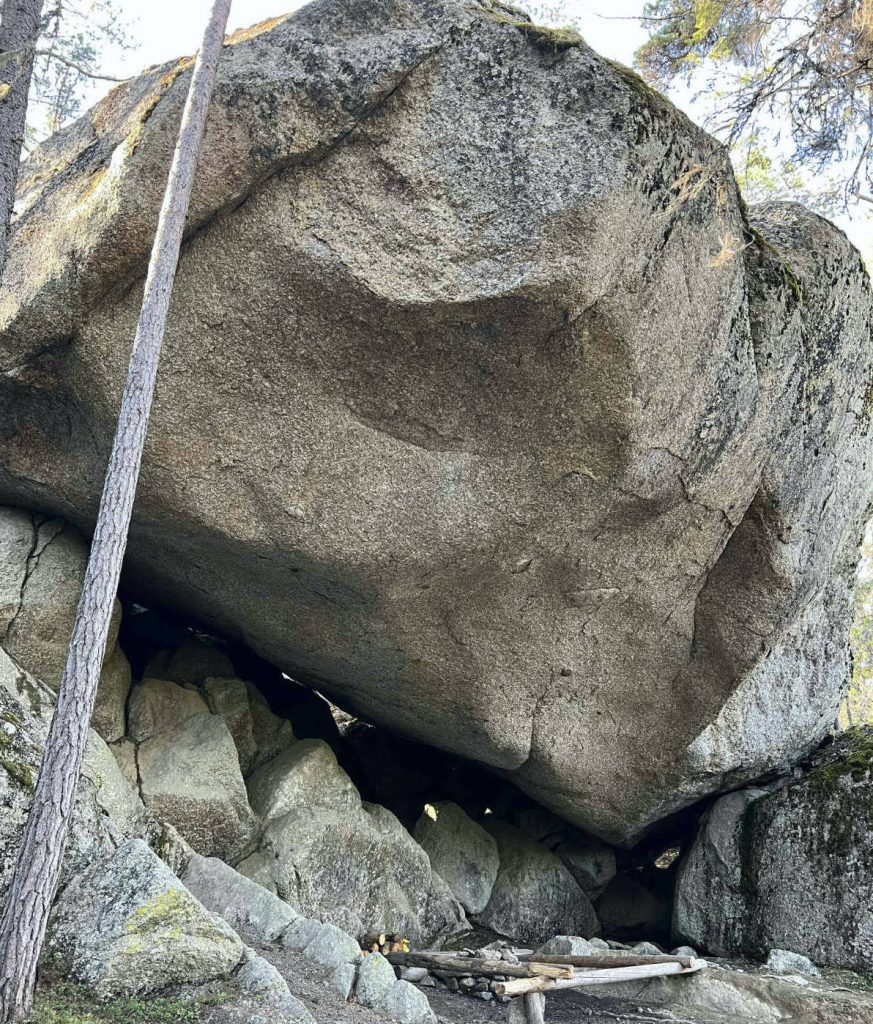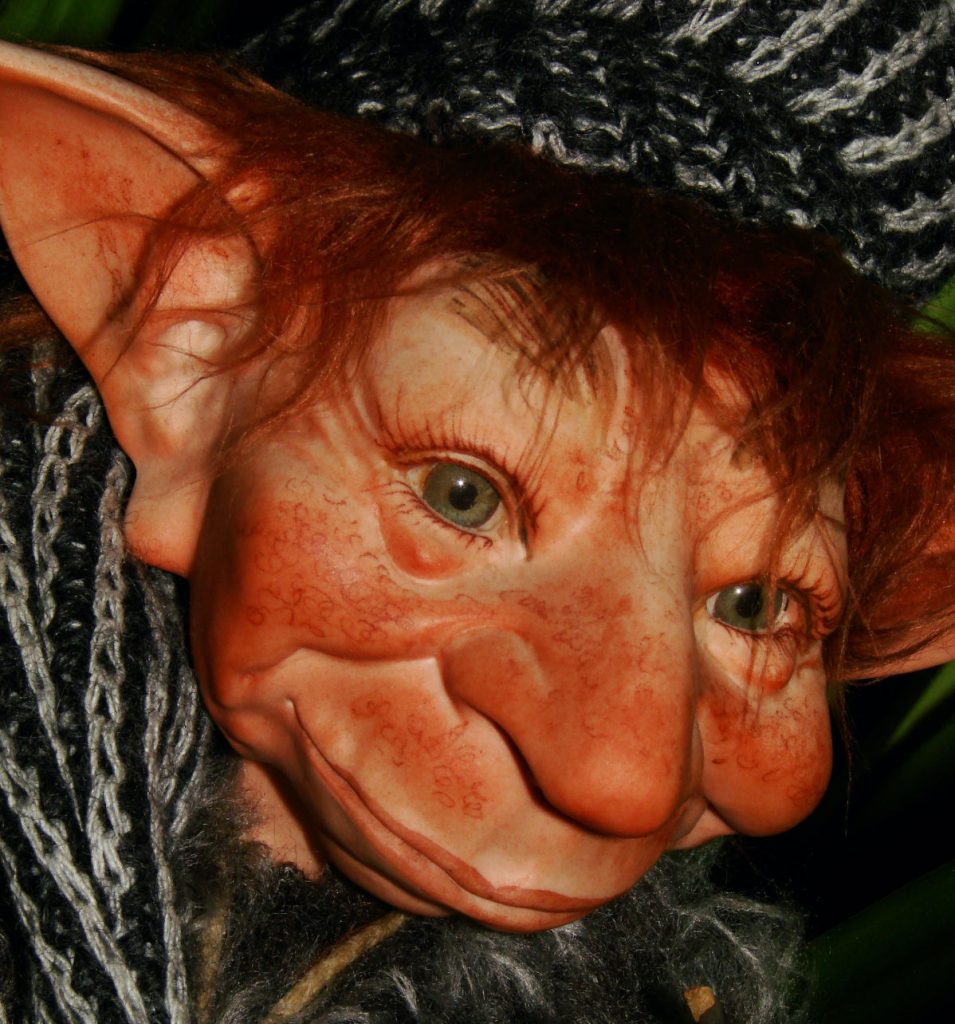Getgrottan
Cave formed by giant boulders
Getgrottan (Goat´s Cave) is a mighty place with giant boulders. The boulders were probably moved here by the ice during one of the ice ages over the past 2.6 million years. It is said that goats used to seek cover in Getgrottan in bad weather. Furthermore people have prayed here that the cattle would be protected against bears and wolves.
Melting water wore down the boulders
Getgrottan is an impressive sight with its giant boulders on top of one another and by the face of rock on a slope. The most striking boulder is gigantic and rests on other relatively smaller blocks. Together they form a roof on top of the cave.
The boulders are rounded despite their size. This may indicate that large quantities of water have flowed here carrying along sand, mud and other sediment that have worn down the rock, in periods like when the inland ice was melting.
The boulders were carried here by ice
It is probable that the boulders were brought here early in the most recent ice age. In the latter stages thereof, the ice sheet and the ground were frozen solid for long periods and the giant blocks more or less frozen to the ground. Rocks that were fixed were not much affected by the inland ice.
It is also possible that the boulders were moved here during a previous ice age.

An older type of granite – Revsund type
Most of the boulders in Getgrottan consist of granite almost 1,900 million years old, of Revsund type. It is easily abraded and falls apart when you scratch the surface. The rock has crystallized at a depth of several kilometres, meaning that it hardened slowly and the crystals have had the time to grow big.
Revsund granite is very common in Jämtland. It was first described in the area of Revsund, south of Östersund.

Troll and vittra
If you grew up 150 years ago, you probably were told to beware of trolls. According to folklore, they lived in the mountain, in caves, in large boulders or in a hole in the ground. They could be large or small and could even change appearance, making them difficult to recognize. And if they wanted to, they could make themselves invisible.
Most of the time they did not care about humans but sometimes they stole cattle or even kidnapped people. Luckily, it was enough to carry something made of steel to protect yourself from the trolls.
In northern Sweden, trolls were not very common. Here, instead, there were vittror, the little people. They were mostly invisible but sometimes you could see them. They often kept cattle, just like humans. If you heard cowbells and cows mooing and stomping but did not see any animals, then you knew it was the vittra’s cows you had come across.
They lived underground so you had to be careful when you built your house. Perhaps someone already lived in the place. But if you were just kind and did not do anything mean to them, they did not do anything to you. They could even help people. For example, warn of fires in the yard.

More information
Sites to visit on Theme Ice Age
More site photos



Places to visit nearby
Practicalities
Accessibility
See Accessibility.
Activities
Go for a hike on the undulating and stony forest trail with plenty of roots up to and around Getgrottan. See also Activities in Ragunda.
Eating and drinking
The nearest grocery store, café and eatery are in Hammarstrand. See also Eating and drinking in Ragunda.
Accommodation
Missing on site, but various options are available nearby. See Accommodation in Ragunda.
Getting here
SWEREF 99 TM N: 6 991 243 E: 569 878
WGS84 N: 63,044003° E: 16,381714°



